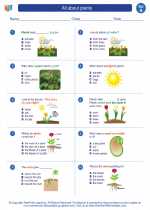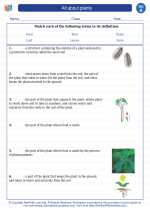What is a Seed?
A seed is the reproductive structure of a flowering plant, containing the embryo and the food supply it needs to start growing into a new plant. Seeds come in many shapes, sizes, and colors, and they can be found inside the fruits of flowering plants.
Parts of a Seed
A typical seed has three main parts: the seed coat, the embryo, and the endosperm. The seed coat protects the embryo and the food supply inside the seed. The embryo is the young plant that will develop into a new plant under the right conditions. The endosperm is the food supply that provides nutrients for the growing embryo.
Seed Germination
When a seed is planted in soil and provided with water, oxygen, and the right temperature, it begins to germinate. The embryo inside the seed starts to grow, and eventually, a new plant emerges from the soil. This process is called germination.
Study Guide
- What is a seed?
- What are the main parts of a seed?
- What is the function of the seed coat?
- What is the embryo in a seed?
- What is the endosperm in a seed?
- What is seed germination?
- What are the conditions needed for seed germination?
- Draw and label the parts of a seed.
- Describe the process of seed germination.
◂Science Worksheets and Study Guides First Grade. All about plants

 Worksheet/Answer key
Worksheet/Answer key
 Worksheet/Answer key
Worksheet/Answer key
 Worksheet/Answer key
Worksheet/Answer key
 Vocabulary/Answer key
Vocabulary/Answer key
